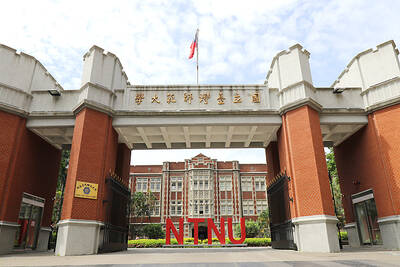Renewed talk of building a bridge to connect Kinmen Island with China’s port city of Xiamen has put the sparsely populated island county in the spotlight as it fights to promote a project that seems to have little if any support from the central government or the opposition.
Local media reported on Thursday that President Ma Ying-jeou (馬英九) had given the order to start the project, but Presidential Spokesman Wang Yu-chi (王郁琦) clarified that Ma had simply asked about the progress of a feasibility assessment on building the bridge.
A Cabinet spokesman later said there was no timetable to complete the feasibility study, a clear indication the government is in no rush to move forward on the ambitious project.
The Democratic Progressive Party opposes the idea, branding it as a step toward unification with China. Even Chinese Nationalist Party (KMT) legislators worry the bridge’s construction would divert local taxpayer funds to help China develop Xiamen.
Yet Kinmen residents want their island, a former front line against China, to be transformed into a new frontier for peace by building a road link to China.
Support for the project, called the Jindeng Bridge (金嶝大橋), is especially strong among those over 60 who experienced the month-long artillery bombardment of the island by the Chinese army in 1958 that killed more than 600 servicemen and civilians and injured more than 2,600.
Most of those now dream of “driving a car from Kinmen to Xiamen in a day,” said Yen Chung-cheng (顏忠誠), a Kinmen native who once served as a vice commander-in-chief of the Republic of China Army.
During his stint as Taiwan’s Fujian governor, a now-defunct position once responsible for Kinmen and Matsu, Yen listed the building of a bridge connecting Kinmen and Xiamen as one of the three major “projects of hope” in the region.
A public opinion poll conducted by the National Kinmen Institute of Technology in April 2007 found building a bridge to Xiamen was the issue of second-greatest concern to the county’s residents, trailing only the need for improved health and emergency care.
The 83.9 percent of respondents who felt it was an important issue believed it was necessary to cement ties with China, around which many of the lives of the 50,000 people who reside in Kinmen revolve.
Kinmen County Commissioner Lee Chu-feng (李炷烽) is firmly behind the project, saying Kinmen has served as a bridge connecting the two sides of the Taiwan Strait since direct ferry services to Xiamen and other Chinese ports were launched in early 2001.
“The building of the Jindeng Bridge will not only help hone Taiwan’s bridge building technologies, it will also help boost development in Kinmen itself,” Lee said. “The Jindeng Bridge will facilitate the building of water pipes and electricity transmission cables between Kinmen and Xiamen, allowing Kinmen to import fresh water and electricity from China — moves that would also manifest Taiwan’s sincerity in pursuing peace and co-prosperity with China.”
The Kinmen County Government said 974,000 people traveled between Kinmen and Xiamen last year, up from the 21,000 who used the ferry service in its inaugural year, an indication, it says, of the county’s crucial role as a gateway to China.
Yet that role has been threatened since direct air and sea links were opened between Taiwan and China last December, prompting Kinmen residents to seek further breakthroughs in its ties with China, particularly Xiamen, Kinmen County Council Speaker Hsieh Yi-chang (謝宜璋) said.
Lee said the Kinmen County Government began studying the possibility of building of a bridge between Kinmen and Xiamen in 2004 and has since proposed three different projects.
Plan A is a 10.3km bridge that would connect Wulongshan (五龍山) in Kinmen, to Jiaoyu (角嶼) and Xiaodeng islets (小嶝嶼) and on to Dadeng Island (大嶝島), which sits west-northwest of Xiamen Island and northeast of Kinmen.
Plan B, the Jindeng Bridge plan, would span 8.6km and directly connect Wulongshan and Dadeng Island.
Plan C is a 11.4km bridge between Wulongshan and Fujian Province’s Lianhe, which lies further north of Xiamen.
The costs of the three plans range from NT$12.7 billion (US$377.98 million) to NT$16.6 billion, Lee said.
Lee said Kinmen County prefers the second option because it is the most direct and the least costly.
If the bridge were built, it would take less than 30 minutes to drive from Kinmen to the island on which the center of Xiamen lies, by way of Dadeng, a land bridge to Xiangan north of Xiamen and then a tunnel currently under construction from Xiangan to Xiamen, Hsieh said.
A bridge would further tie the Taiwanese island to the major Chinese port city.
An increasing number of Kinmen youths have also chosen to attend schools in Xiamen rather than traveling to Taiwan proper for studies after the ferry service was opened.
Moreover, as their children went to Xiamen to get an education, parents in Kinmen began to purchase houses or invest in real estate in Xiamen.
Hsieh says the bridge would turn Kinmen into a Xiamen suburb, giving Kinmen residents more convenient links to the big city.
“A genuine one-day traffic zone between Kinmen and Xiamen would be created,” Hsieh said.

CHANGING LANDSCAPE: Many of the part-time programs for educators were no longer needed, as many teachers obtain a graduate degree before joining the workforce, experts said Taiwanese universities this year canceled 86 programs, Ministry of Education data showed, with educators attributing the closures to the nation’s low birthrate as well as shifting trends. Fifty-three of the shuttered programs were part-time postgraduate degree programs, about 62 percent of the total, the most in the past five years, the data showed. National Taiwan Normal University (NTNU) discontinued the most part-time master’s programs, at 16: chemistry, life science, earth science, physics, fine arts, music, special education, health promotion and health education, educational psychology and counseling, education, design, Chinese as a second language, library and information sciences, mechatronics engineering, history, physical education

The Chinese military has boosted its capability to fight at a high tempo using the element of surprise and new technology, the Ministry of National Defense said in the Quadrennial Defense Review (QDR) published on Monday last week. The ministry highlighted Chinese People’s Liberation Army (PLA) developments showing significant changes in Beijing’s strategy for war on Taiwan. The PLA has made significant headway in building capabilities for all-weather, multi-domain intelligence, surveillance, operational control and a joint air-sea blockade against Taiwan’s lines of communication, it said. The PLA has also improved its capabilities in direct amphibious assault operations aimed at seizing strategically important beaches,

The High Prosecutors’ Office yesterday withdrew an appeal against the acquittal of a former bank manager 22 years after his death, marking Taiwan’s first instance of prosecutors rendering posthumous justice to a wrongfully convicted defendant. Chu Ching-en (諸慶恩) — formerly a manager at the Taipei branch of BNP Paribas — was in 1999 accused by Weng Mao-chung (翁茂鍾), then-president of Chia Her Industrial Co, of forging a request for a fixed deposit of US$10 million by I-Hwa Industrial Co, a subsidiary of Chia Her, which was used as collateral. Chu was ruled not guilty in the first trial, but was found guilty

New Taipei City prosecutors have indicted a cram school teacher in Sinjhuang District (新莊) for allegedly soliciting sexual acts from female students under the age of 18 three times in exchange for cash payments. The man, surnamed Su (蘇), committed two offenses in 2023 and one last year, the New Taipei District Prosecutors’ Office said. The office in recent days indicted Su for contraventions of the Child and Youth Sexual Exploitation Prevention Act (兒童及少年性剝削防制條例), which prohibits "engaging in sexual intercourse or lewd acts with a minor over the age of 16, but under the age of 18 in exchange for